U.S. loan defaults continued to rise in July, surpassing 4% by issuer count for the first time since 2010, after five constituents of the S&P/LSTA Leveraged Loan Index tripped defaults on $7.7 billion of term loans.
The rate by issuer count, at 4.14%, is the highest since September 2010. By amount, defaults, at 3.90%, is at a high mark since February 2015. Excluding Energy Future Holdings Corp.'s outsized $19.5 billion default in April 2014, the rate by amount is the highest since June 2010.
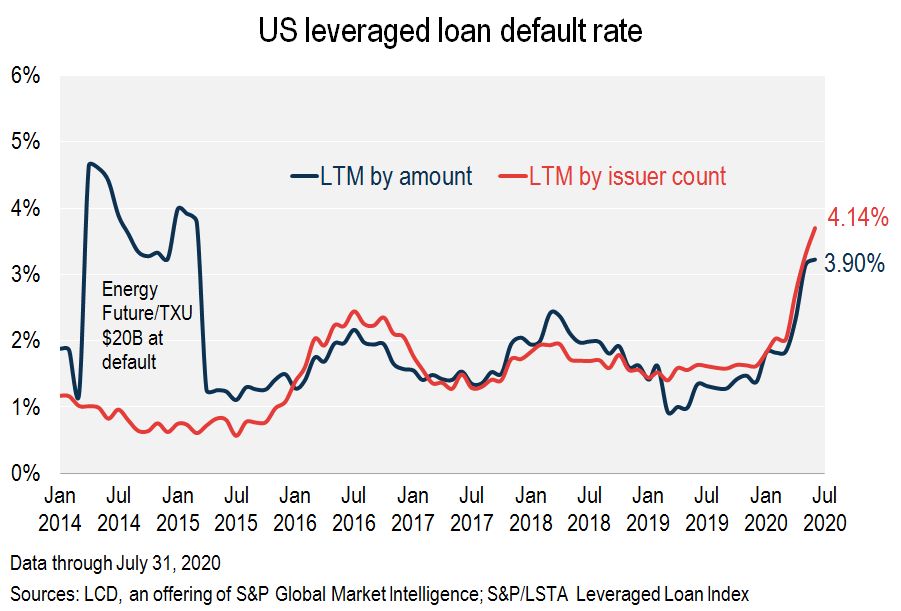 |
With economic fallout from the coronavirus pandemic playing an increasing role, default volume over the last 12 months, at $46.35 billion, outpaces the same period of 2019 by 233%.
Access our complimentary webinar on distressed debt in the energy sector
Access NowThat being said, for July's volume, only educational travel provider WorldStrides Inc. carried a single-B rating before the COVID-19 outbreak, joining companies such as Hertz Global Holdings Inc., Cirque Du Soleil America Inc., 24 Hour Fitness, Fieldwood Energy, Technicolor, CEC Entertainment Inc. (Chuck E Cheese), and Covia Holdings Corp. (Fairmount Santrol), to see such a quick decline from this ratings bracket. All other loan defaults in July (California Resources, Seadrill Partners LLC, Global Eagle Entertainment
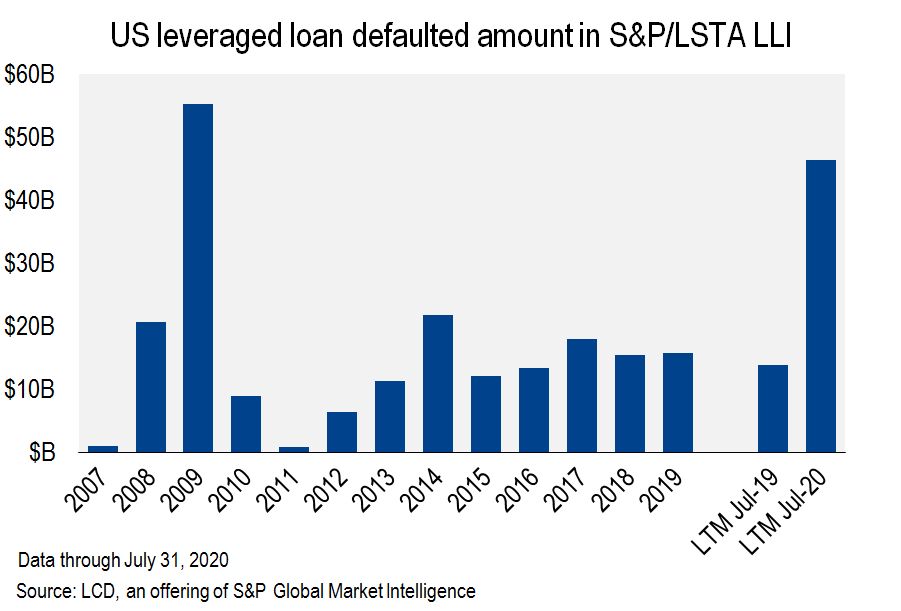 |
After Retail broke a sector-level default record in May, the Oil & Gas sector did so in July. At 31%, it is once again massively out-trending the broader default landscape.
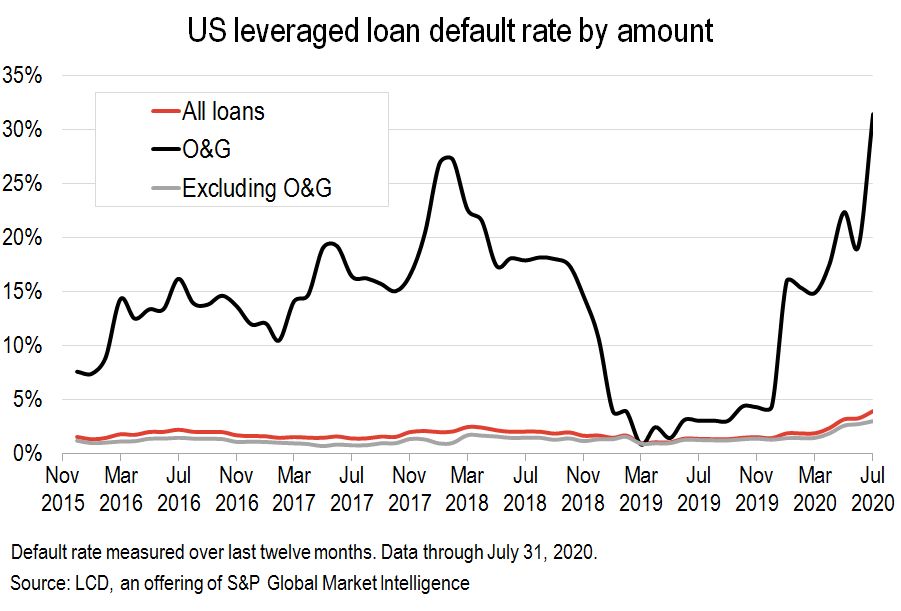 |
Many in the energy space have in the past attempted to right-size their capital structure in an effort to ride out what became a historic and sustained low oil price environment, only to return to the restructuring table. And loan issuers are no exception.
California Resources in July filed for Chapter 11 after completing a far-reaching uptier exchange in 2015. Fieldwood Energy defaulted in May upon failing to make payments on its first and second-lien term loan, just one year after emerging from bankruptcy. Ultra Petroleum Corp.
Looking across all industries, year-to-date, Oil & Gas has contributed to more than a quarter of all defaults this year, at 29%. Telecommunications follows, at 13%, as does Retail, at 12%.
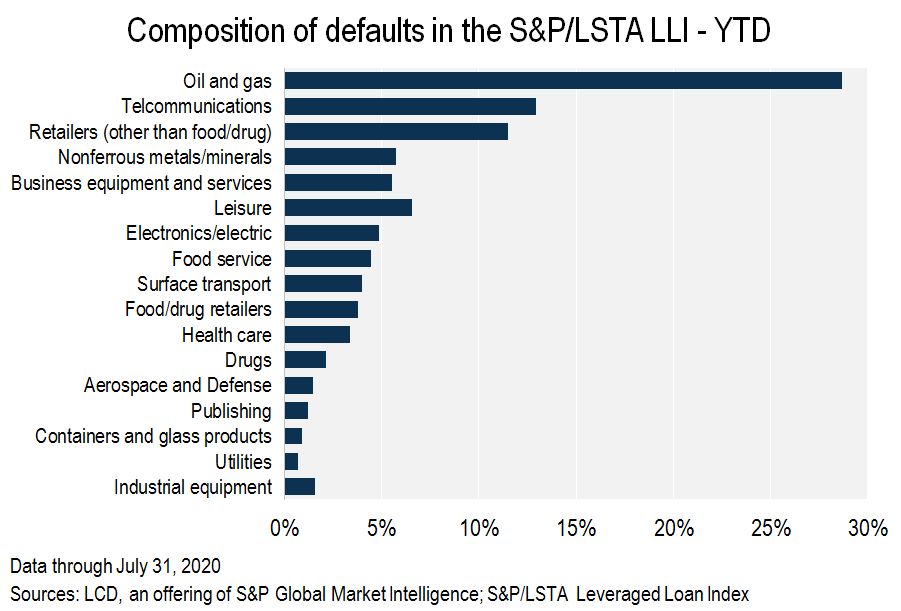 |
The weaker link
Forward indicators, unsurprisingly, continue to point to increasing default activity in the wake of the pandemic and the widespread shutdown of economic activity.
In the first full-quarter view tracking loan "Weakest Links" since the COVID-19 pandemic took hold, LCD's analysis showed the number of Weakest Links had surged to 329 issuers, up from 227 in March and 145 in December.
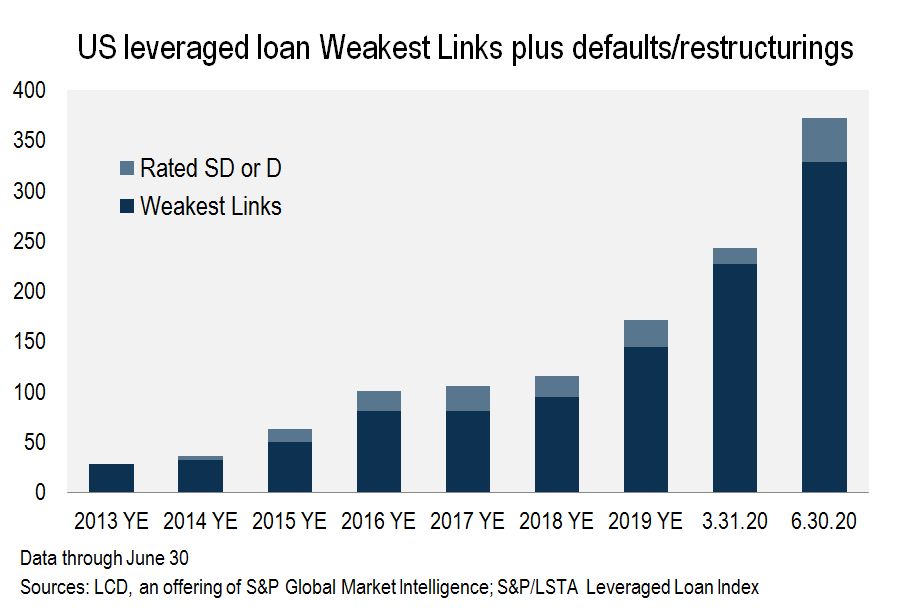 |
LCD's Loan Weakest Links, loans in LCD's universe that have a Corporate Credit Rating of B– or lower and a negative outlook from S&P Global Ratings, by share, as a result, rose to 25% at the end of June, from 17% at the end of March and 11% at the end of 2019.
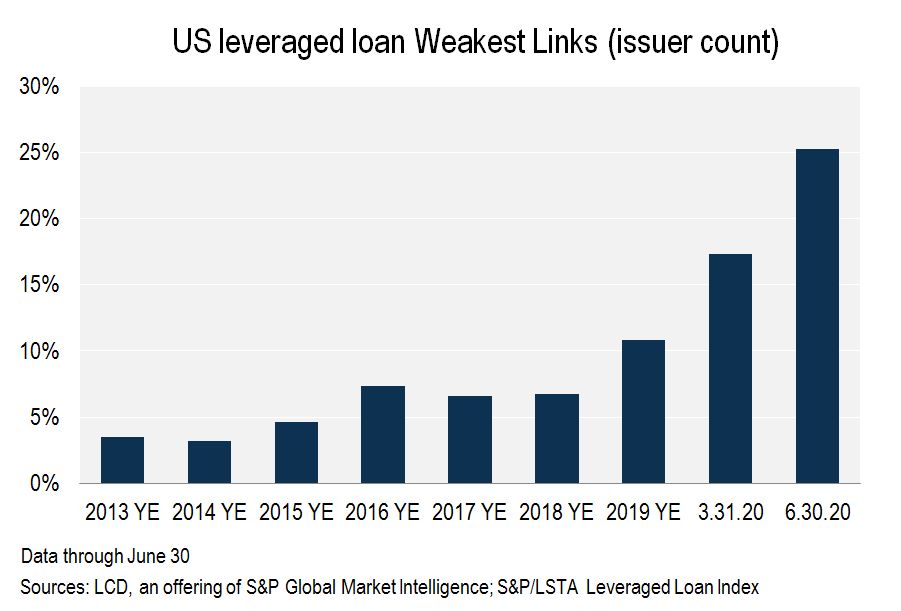 |
This comes, of course, as downgrades continue to outpace upgrades at a heady rate. Through July, 37% of the loan market by par amount outstanding at the facility level had received a ratings downgrade this year, representing $435.1 billion of the $1.169 trillion of rated loans at the end of 2019.
Downgrades to upgrades have lessened from the May peak, but they remain elevated. In July, 33 loans were downgraded, versus seven upgrades. On a three-month rolling basis, the ratio of loan downgrades to upgrades, at 8x, is down from a record high of 43x in May, but still higher than 3x at the end of 2019.
In terms of market distress, levels have also come a long way from the 57% distress peak on March 23.
After averaging almost 20% in April and 15% in May, only 8% of performing loans were priced below 80 at the end of July. This compares to 4% at the end of 2019.
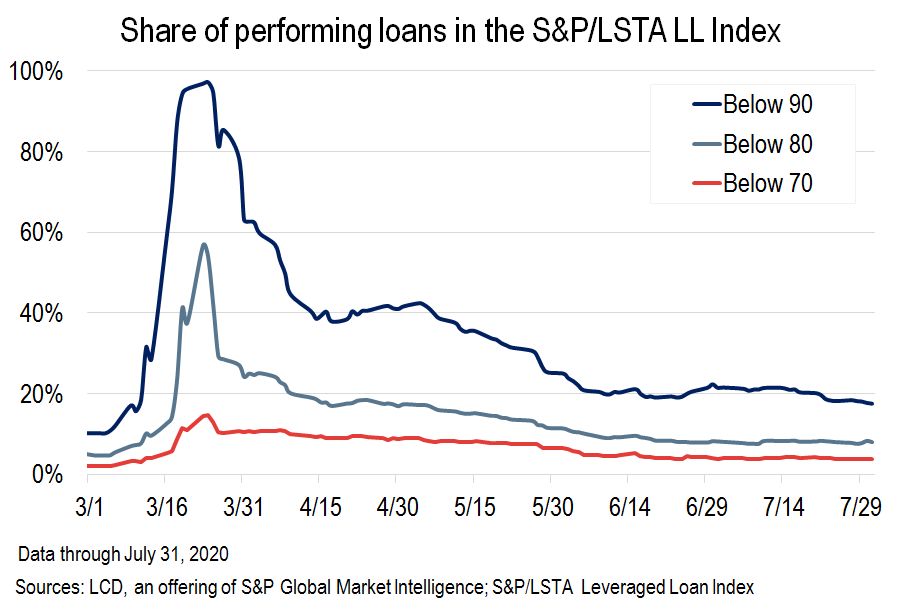 |
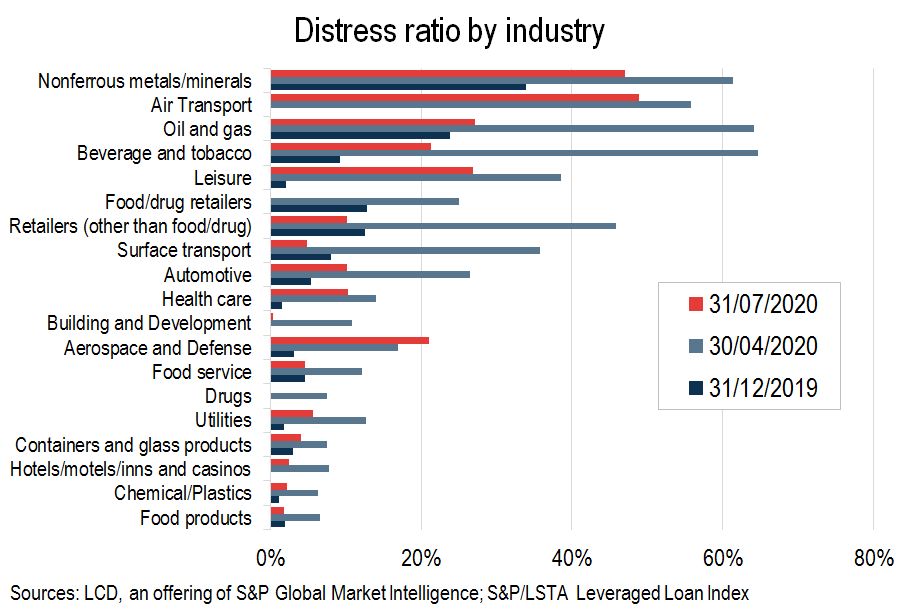 |
Among the sectors with a more meaningful Index share (above 1%), Oil & Gas and Leisure continue to lead in sector-level distress. Oil & Gas, a mainstay in the distressed buckets, has a sector-level distress ratio of 27.1%, compared to 23.8% at the end of 2019. Leisure, on the other hand, had only 2.1% of loans in the sector priced below 80 at the end of 2019. Unsurprisingly, given lockdown measures and travel restrictions, the sector-level distressed ratio is now among the highest for industries with a 1% index share or more, at 26.9%.
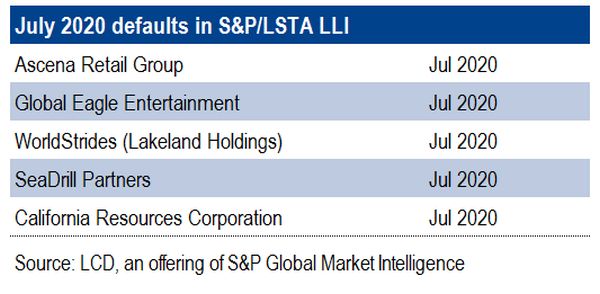 |
This article was written by Rachelle Kakouris, who is a research director at LCD.
Sign up for LCD’s newsletter to receive more stories about leveraged loan defaults
LCD comps is an offering of S&P Global Market Intelligence. LCD’s subscription site offers complete news, analysis and data covering the global leveraged loan and high yield bond markets. You can learn more about LCD here.



